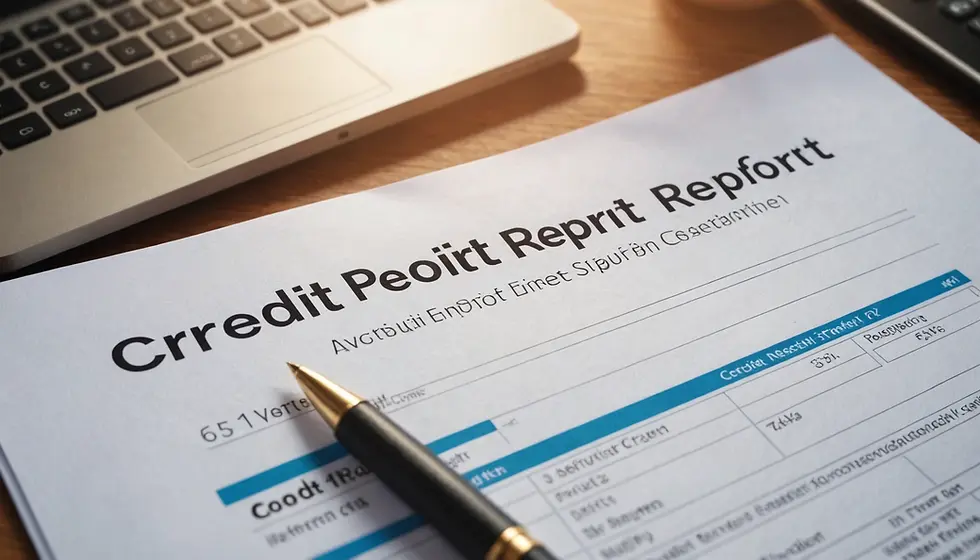How to Invest Like a Pro: The Top 5 ETF Funds You Didn't Know You Needed
- Al

- Dec 30, 2024
- 4 min read
Investing in the stock market can feel intimidating, especially if you're just starting out. With countless options flooding the market, it can be hard to figure out which funds are right for you. That's where Exchange-Traded Funds (ETFs) come into play. These investment tools have become increasingly popular due to their low fees, wide diversification, and flexibility. However, not every ETF is the same. Let’s take a closer look at five exceptional ETFs that can significantly enhance your investment portfolio.
What is an ETF?
ETFs, or Exchange-Traded Funds, are investment funds that consist of a mix of assets like stocks, bonds, or commodities. They trade on stock exchanges similarly to individual stocks, allowing investors to buy and sell shares throughout the day.
What makes ETFs especially appealing is their ability to offer extensive market exposure while keeping costs low. Many ETFs mirror specific indexes, like the S&P 500, granting you access to a broad spectrum of investments without selecting individual stocks. This characteristic makes ETFs an excellent choice for both new and experienced investors.
1. Vanguard Total Stock Market ETF (VTI)
One of the leading options available is the Vanguard Total Stock Market ETF (VTI). This fund aims to replicate the performance of the CRSP U.S. Total Market Index, encompassing companies of all sizes from various sectors.
By investing in VTI, you gain access to the entire U.S. stock market, from small-cap startups to established large-cap giants. For example, as of October 2023, VTI includes over 4,000 stocks, enabling substantial diversification.

VTI stands out with a competitive expense ratio of just 0.03%, making it affordable for long-term investors. Whether you're new to investing or looking to round out your existing portfolio, VTI provides a robust foundation.
2. iShares Core U.S. Aggregate Bond ETF (AGG)
Shifting from stocks to bonds, the iShares Core U.S. Aggregate Bond ETF (AGG) is an excellent option. This fund is designed to track the Bloomberg U.S. Aggregate Bond Index, which represents a broad spectrum of U.S. investment-grade bonds.
Incorporating AGG into your investment strategy can help balance your portfolio and mitigate risk. During market fluctuations, bonds can act as a buffer, creating stability in your investment mix.

AGG features a low expense ratio of 0.04% and includes over 10,000 bonds, making it an attractive choice for conservative investors or anyone looking to broaden their fixed-income exposure.
3. Invesco QQQ ETF (QQQ)
If you're eager to seize opportunities in technology, the Invesco QQQ ETF (QQQ) is a strong contender. It tracks the Nasdaq-100 Index, which features the 100 largest non-financial companies on the Nasdaq stock exchange.
Investing in QQQ allows you to tap into fast-growing sectors like technology and consumer services. Major players such as Apple, Amazon, and Microsoft account for a significant portion of QQQ’s holdings, providing exposure to high-growth potential.

However, keep in mind that QQQ has historically shown higher volatility than the broader market. Investors in this ETF should be prepared for fluctuations in exchange for potentially higher long-term returns.
4. SPDR S&P 500 ETF Trust (SPY)
For an accessible way to invest in large-cap U.S. stocks, consider the SPDR S&P 500 ETF Trust (SPY). This ETF aims to match the performance of the S&P 500 Index, which comprises 500 of the largest companies in the U.S.
SPY offers varied exposure to numerous sectors, including technology, healthcare, and consumer discretionary. This holistic approach makes it a valuable option for those wanting to invest in the U.S. economy as a whole.
SPY's liquidity is another strong point, allowing you to easily buy and sell shares without concern for market availability.
5. Schwab U.S. REIT ETF (SCHH)
Lastly, let’s delve into real estate with the Schwab U.S. REIT ETF (SCHH). This fund aims to track the Dow Jones U.S. Select Real Estate Securities Index, focusing on companies involved in real estate, notably Real Estate Investment Trusts (REITs).
Investing in real estate can help shield your portfolio from inflation, and SCHH gives you access to a sector known for generating reliable dividend income. As of October 2023, REITs typically return around 3-4% dividends, appealing to income-focused investors.
Investing in SCHH allows for real estate diversification, offering exposure to tangible assets without the challenges of direct property ownership.
Building Your ETF Portfolio
Having covered the top five ETFs, let’s explore how to strategically incorporate them into your investment plan.
1. Assess Your Risk Tolerance
Before diving in, it's crucial to evaluate your risk threshold. Your willingness to take risks can vary based on your age, financial situation, and investment ambitions. Knowing your risk tolerance helps determine how much of your portfolio should be invested in stocks (like VTI or QQQ) versus bonds (like AGG).
2. Diversify Across Asset Classes
ETFs excel at providing diversification. A balanced portfolio often includes a mixture of stocks, bonds, and alternative assets like real estate.
Consider spreading your investments across the discussed ETFs to create a well-rounded portfolio aligned with your financial objectives.
3. Stay Informed and Review Regularly
Investing isn’t a one-time endeavor. Staying updated on market trends can help you make smarter investment decisions.
Regularly reviewing your portfolio—ideally once a year—can ensure you maintain your target asset allocation. Market performance varies, and adjustments may be needed to manage risk effectively.
Your Path to Smart Investing
Diving into ETFs can unlock a world of investment possibilities, enabling you to engage in stock and bond markets without the complexities of picking individual stocks.
From the Vanguard Total Stock Market ETF to the Schwab U.S. REIT ETF, the options outlined above offer a solid base for both novice and experienced investors aiming to build a diversified portfolio.
As you embark on your investment journey, keep in mind your risk tolerance, strive for asset diversification, stay informed, and routinely review your holdings. With a thoughtful approach, investing can transform from a daunting task into a rewarding experience.
So, take the plunge! Explore these top ETF funds and start investing like a pro today!









Comments